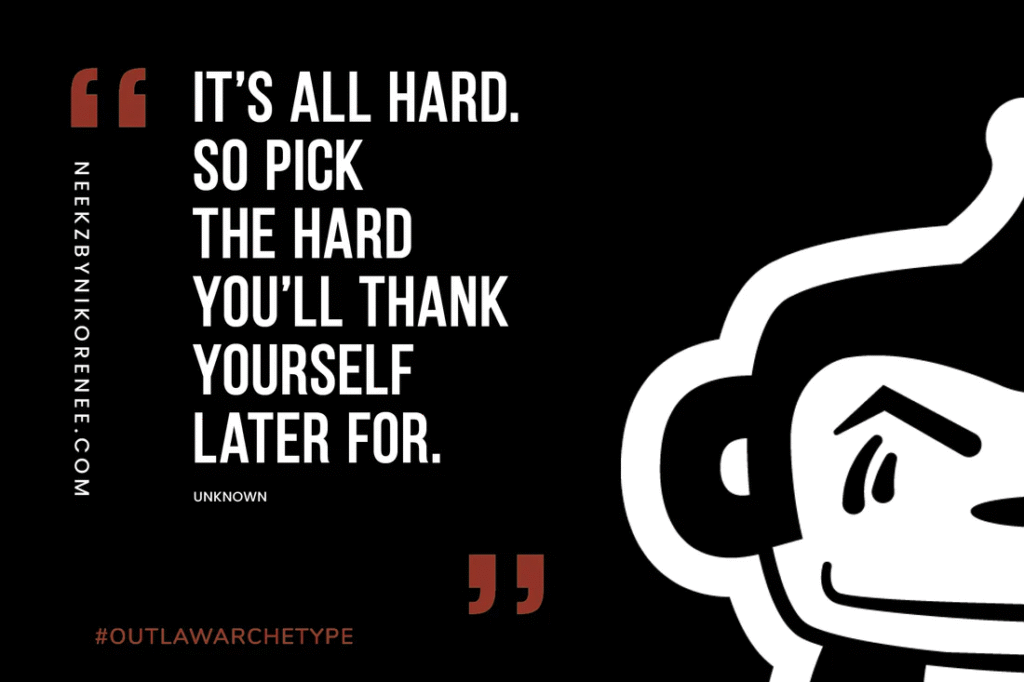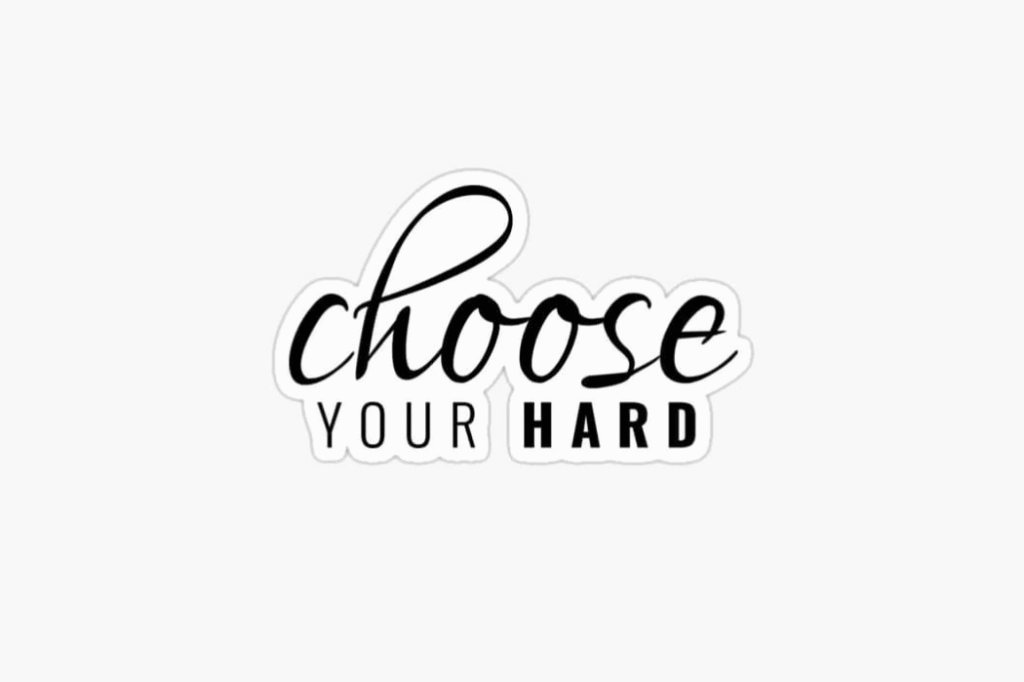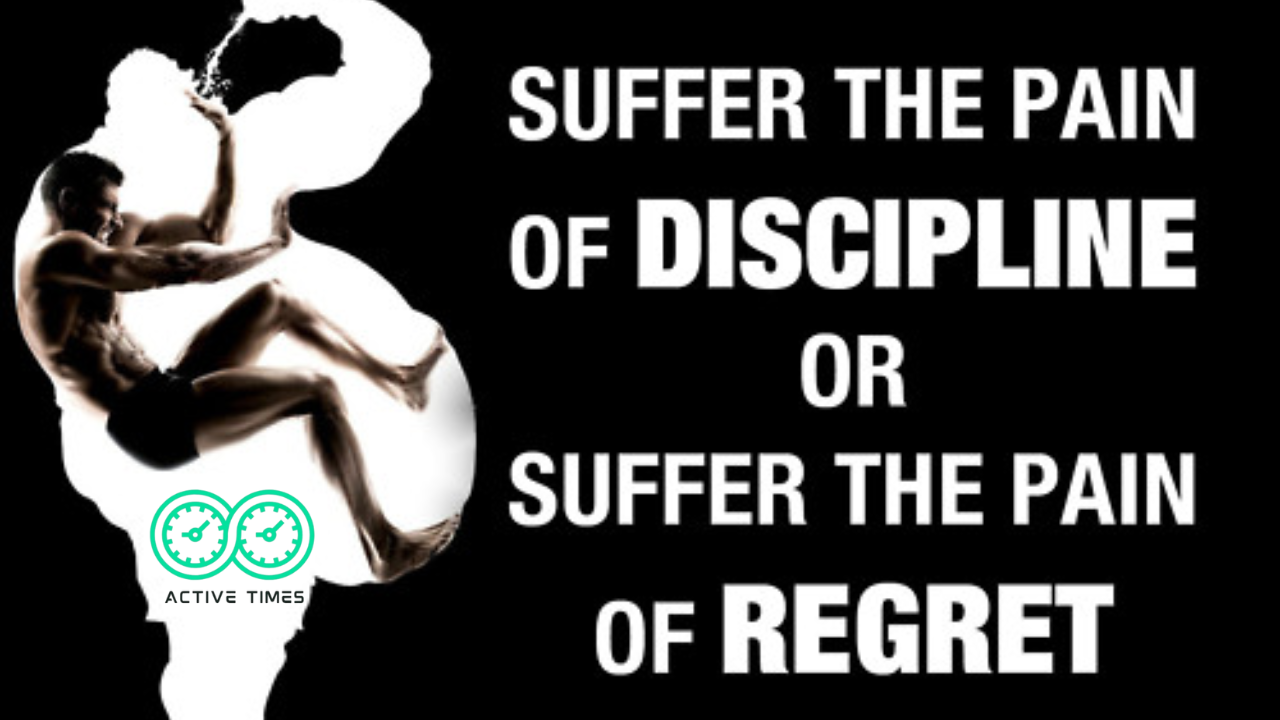Life isn’t always easy — and it’s not supposed to be. Every day we face challenges, choices, and tough moments. The idea behind “choose your hard” is simple: life will always be hard in some way, so why not pick the version that helps you become stronger, smarter, or happier? Whether it’s waking up early, sticking to your goals, or saying no to distractions, choosing the right “hard” can shape your future in powerful ways.
What Does “Choose Your Hard” Mean?
“Choose your hard” is a phrase that reminds us that every choice comes with some level of difficulty. Avoiding a hard decision might feel easier at the moment, but it often leads to bigger problems later. On the other hand, doing the tough thing now — like exercising, studying, or having a tough conversation — often leads to a better, more successful future.
Think of it this way: working out is hard, but so is feeling tired and unhealthy. Saving money is hard, but so is being broke. Learning new skills is hard, but so is staying stuck in the same place. No matter what you choose, there will be a hard part — so choose the one that helps you grow.
Why It’s Okay That Life Is Hard
Sometimes people think that if life is hard, something must be wrong. But that’s not true. Life being hard doesn’t mean you’re doing it wrong — it means you’re living it right. Growth comes from struggle. Muscles grow through resistance. Minds grow through challenge. Emotions grow through experience.
Accepting that life will always have its hard parts makes things easier, not harder. Instead of trying to avoid discomfort, we can learn to handle it better. It’s okay for life to be tough — that’s how we build strength and confidence.
Common “Hards” We Face Every Day
We all face choices each day. Some seem small, like getting out of bed early. Others are bigger, like choosing between short-term fun and long-term goals. These daily decisions might not feel life-changing in the moment, but over time, they shape our habits, our future, and who we become.

Here are a few common “hards” that people face, with a look at how choosing the right one can make a big difference:
Waking Up Early vs. Rushing All Day
Waking up early is hard. The bed feels warm, and sleep feels good. But starting the day early gives you time to plan, think, and prepare. It helps reduce stress and lets you lead the day instead of letting the day lead you.
On the other hand, sleeping in feels good in the moment — but leads to rushing, forgetting things, and starting the day with anxiety. You’re always catching up.
Choose the hard that gives you peace, not panic.
Saying No vs. Feeling Overwhelmed
Saying no can feel uncomfortable. You don’t want to disappoint others. But constantly saying yes — to work, events, favors — leaves you drained and overwhelmed.
When you say no to what doesn’t serve you, you’re saying yes to rest, balance, and peace. It’s hard at first, but it’s a powerful choice that protects your energy and mental health.
Choose the hard that respects your limits.
Studying Now vs. Struggling Later
Studying can be boring. It’s tempting to scroll on your phone, watch a show, or hang out with friends. But choosing to study now helps you understand, prepare, and grow your future.
Skipping study may feel fun today, but struggling later — with grades, career goals, or confidence — is a much harder price to pay.
Choose the hard that builds your future, not the one that risks it.
How “Choose Your Hard” Helps Kids and Adults
This mindset doesn’t only help grown-ups — it’s also a powerful lesson for kids and teens. Teaching children that not everything in life is easy helps them become more resilient. When they learn that hard things are part of growth, they stop seeing challenges as problems and start seeing them as opportunities.
Adults, too, benefit from this idea. We often think we’re supposed to have it all figured out. But the truth is, every age comes with tough choices. Whether it’s parenting, saving money, building a career, or taking care of health, we’re always choosing our hard.
By being intentional — and not just reacting — we take control of our lives.
Real-Life Examples of Choosing the Right Hard
Let’s look at some everyday people and how they chose their hard:
- Emma, a college student, found studying for math exams exhausting. But she chose the hard work of preparing instead of failing. Now, she’s confident in her career path.
- Carlos, a new father, wakes up early every day to spend time with his baby before work. It’s hard, but it builds a deeper bond and keeps his priorities in place.
- Jasmine, a small business owner, struggled with saying no to clients. But she chose the hard path of setting boundaries. Now, her work-life balance has improved.
- Marcus, a 40-year-old man, started walking every day to lose weight. It was hard to begin, but he now enjoys better health and more energy.
In every case, the person faced two types of hard — one that leads to growth and one that leads to regret. The difference came from choosing the right one.
Simple Ways to Start Choosing Better Hards
If you’re ready to take control of your choices, start small. Changing your mindset doesn’t happen overnight. But with a few simple steps, you can begin to shift how you think about life’s challenges.

Make a List of Your Daily Choices
Write down the things you do every day — even the little things. Are you choosing habits that support your health, growth, and goals? Or are you avoiding the hard stuff and feeling stuck?
Once you see the patterns, you can start shifting your choices.
For example:
- Eating fast food vs. cooking a healthy meal
- Scrolling endlessly vs. reading something helpful
- Complaining vs. problem-solving
Awareness is the first step toward change.
Talk About Your Choices with Someone
Sometimes, we don’t realize we’re making poor choices until someone helps us see it. Talk to a friend, mentor, or family member about the tough choices in your life. Ask them how they choose their “hard.” You might find new strategies and support.
This kind of conversation also keeps you accountable. When you tell someone your goals, you’re more likely to stick to them.
What Happens When You Don’t Choose Your Hard
If you avoid all the hard things, life doesn’t get easier — it often gets harder. Not choosing is still a choice. And when we let life happen to us instead of leading it, we often end up with stress, regret, or missed opportunities.
Examples:
- Avoiding conflict leads to broken relationships.
- Ignoring your health leads to pain and medical bills.
- Skipping hard work leads to financial stress.
The pain of not choosing your hard always shows up later — often when it’s too late to fix.
Thoughts – You’re Strong Enough to Choose
You might not feel strong every day, but you are. Choosing the right hard isn’t about being perfect. It’s about being willing. It’s about saying, “I know this is tough, but I’m tougher.” Every day, in small ways, you prove your strength by showing up — even when it’s hard.
And when you mess up (because we all do), you try again. That’s what real strength looks like.
The Bottom Line
Life gives us hard things — there’s no way around it. But we can choose the kind of hard we want to live with. We can choose the hard that brings progress, peace, and pride. Or we can let life choose for us — and live with the stress that comes from avoiding responsibility.
The good news? You get to decide. And every small decision you make today builds your future.
